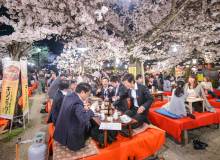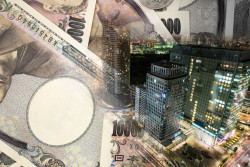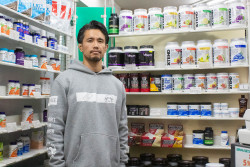
Originally published on metropolis.co.jp on August 2008
Sano offers contemporary Japanese cuisine at its finest. Chef Shigeru Sano, 40, knows what he’s doing, and assumes you will trust his taste. His menu is omakase, or “leave it up to the chef,” and that’s just what you should do.
Sano puts together a seasonal dinner course (¥10,500) based on the freshest ingredients, and prepares dishes to showcase natural flavors, often with surprising juxtapositions.
His small restaurant is elegantly simple in decor. The blond wood counter comfortably seats six. Two tables for four hide behind large linen noren curtains, and a semi-private alcove with tatami mats will seat a lucky party of six.
The nihonshu list is extensive, and has been selected and arranged by five criteria: drinkability, freshness, fragrance, ripeness and more ripeness. Try a flask of Toyobijin (¥1,680) which is light and fruity, almost like a sauvignon blanc, or the clean and crisp Hakkaisan.
On a recent night, the eight-course dinner started with crisp chips of satsuma imo, lotus root, and an ayu fritter served in a loose cone of washi paper.
Next came isaki, a summer season fish with the unfortunate moniker “grunt.” A morsel of its delicately-flavored flesh was served in a covered lacquer bowl. When you lift the lid, you are treated to a suikuchi, a citrus waft of fragrant sudachi, an olfactory gratification essential in kaiseki. Centered in a deliciously clear broth was an artful arrangement of isaki, myoga, daikon and okra.
The progression continued with sashimi of hamo (pike conger eel) and kochi (flathead—another bluntly named fish) with shoyu spiked with plum flesh and wasabi.
One of the most interesting dishes was the amadai (sea bream), lightly roasted and topped with a few grilled kernels of sweet corn, served with a thin slice of fresh sparrow ginger and two small green peppers stuffed with uni. A surprising, creative and winning mix of flavors.
The pacing of the dinner is relaxed, with Sano and his one assistant timing the serving of each dish when you are ready for it. He doesn’t hang about behind the counter chatting. He’s back and forth, calmly tending to and arranging each course perfectly for presentation.
His ceramic bowls, plates and dishes are pleasing to the eye, and chosen to complement the color and shape of the ingredients. A small white bowl held the next course—a “stew” of pink shredded crab, purple chunks of roasted eggplant, earthy lotus root and bright green mitsuba. This visual delight was followed by a geleé of shirasu (young sardines) with a luscious egg yolk sauce.
If you sit at the counter, your meal will end with Sano himself mixing the brown rice studded with chamame soybeans and kamasu (barracuda) and serving it in sturdy bowls along with soup and pickles.
Sano doesn’t neglect dessert. His warabi mochi, a typical Japanese summer sweet, was dusted with emerald green tea powder flavored with a hint of cinnamon and served with spoonful of honey ice cream.
Lunch at Sano is a bargain, with elegant bento priced at ¥2,100 and ¥3,150.









